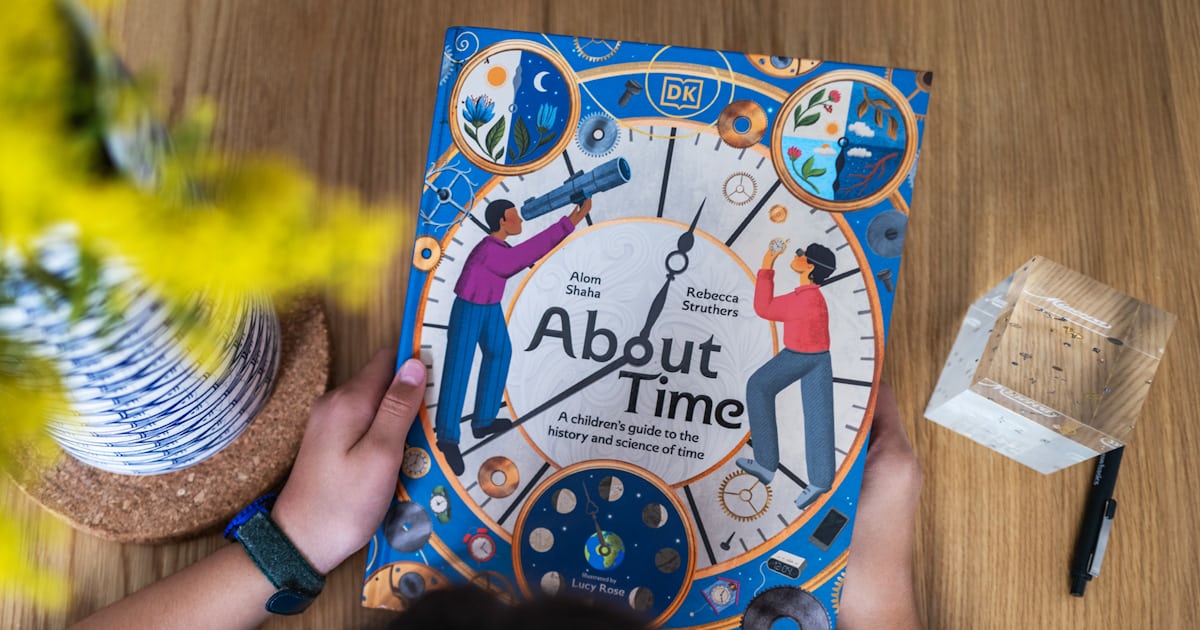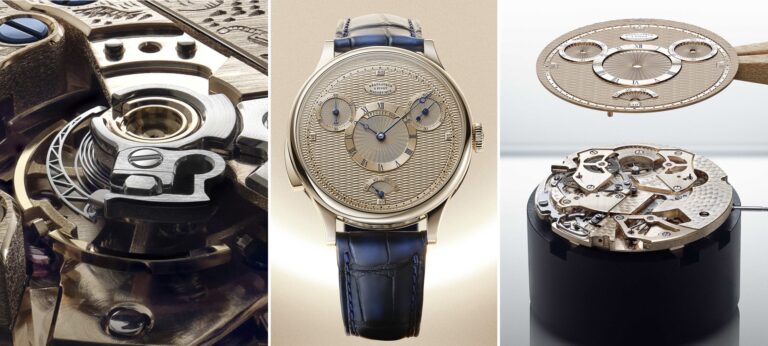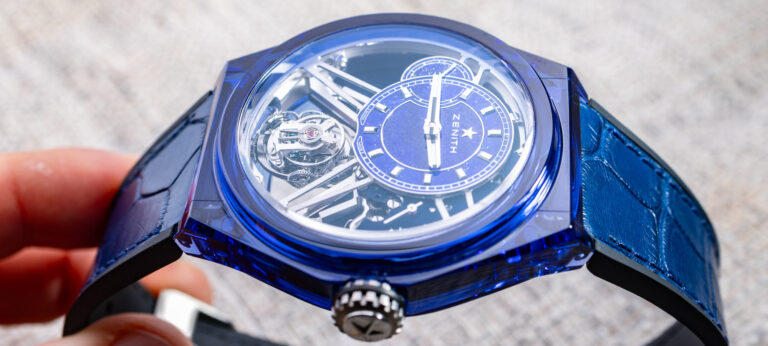Editor’s pick — Accessory quick take: key highlight (movement/specs for watches, materials/finish, limited run, pricing tier) in 1–2 lines.

Editor’s Note: This is a special story in which Eleanor, the esteemed daughter of Hodinkee’s own Head of Video, Dave Aujero, reviews her experience of reading the recently released book “About Time: A Children’s Guide to the History and Science of Time” by Rebecca Struthers and Alom Shaha.
Rebecca Struthers is a British watchmaker, historian of horology, and author (we highly recommend 2023’s excellent “Hands of Time: A Watchmaker’s History“). Alom Shaha is a physics teacher, writer, filmmaker, and science communicator with a background in creating content designed to encourage parents and children to learn more about science.
“About Time” is an interactive book for children around the ages of 7 to 9 that covers a wide range of how humans tell time, including clocks and watches. If you’ve got a child in your life who might enjoy a fun chance to learn more about how we tell time, this story is for them. Let’s get into Eleanor’s review…
[The Book Report] About Time: A Children’s Guide to the History and Science of Time

My name is Eleanor Aujero; I’m 9 years old and a 5th grader at PS889 in Brooklyn, baby! I have been telling time since I was in 1st grade, and today I will be writing a review of the book “About Time” by Rebecca Struthers and Alom Shaha. This is a nonfiction book, and I chose this book because I feel like time is something that is just baffling (And also because my dad works at Hodinkee, and he thought it would be a good idea to read it!)
There are so many ways people have learned how to tell and identify time. Let’s dig deeper into a few!

My Way of Telling Time (the LAZY way)
I’ll start you off with the easiest, most efficient, and my personal favorite method on how to tell time. Step one, don’t even THINK about standing up if you are sitting, simply look at a clock, yell at your sibling to tell you (the time), or as a last resort, crawl to the closest way to find the time without losing contact with your couch, which is where I’m typing this article!
Sundials
One way that you can tell time is by using a sundial, if you know how. One part that surprised me right when I opened up to the page, is that the book includes instructions to make your own sundial! This really caught my attention, and it was a great way to hook me into the section already. Some of the things that I learned was that there is a piece on the sundial called a gnomon and the sun creates a shadow on the other side of the gnomon.

Machu Picchu in Peru. Location of the Intihuatana Stone, an ancient sundial.
Then, the shadow lines up with a number on the sundial, which is the current time. In the 18th century, there were pocket sundials and sundials in watches, but they weren’t too accurate! My dad even told me how this method of using sundials to tell time goes back all the way to ancient times. He showed me pictures of his time in Machu Picchu in Peru, where there is a very large sundial carved in stone.

Closeup of the Intinhuatana Stone. Look at that gnomon!
The ancient Incan people figured out how to align the position of the stone exactly to March 21 and September 21. Those are the dates of the equinoxes. They did that without a phone!
Hourglasses
Another way you can tell time is by hourglasses. We have not yet figured out where hourglasses originated, but we think that they came from ancient Egypt or Babylonia, which is now the southern part of Iraq. I love that this section also had a part on how to make your own hourglass with DIY things that you can find at home!
Sand is filled to a certain amount that will flow through for an amount of time. Did you know that hourglasses were mostly used on ships because water clocks would slosh around and would be unreliable. So hour glasses were perfect for long nights at sea. Cool! (I get sooo sick on boats).
Analog and Digital Watches
We no longer need to rely on sundials and hourglasses, because we now have watches and clocks. The thing that amazes me the most is that electronic watches have a quartz crystal inside, and this crystal vibrates 32,768 times per second!!!

Even though there are so many awesome parts in this book, this was definitely my favorite. Another thing that I feel is just crazy is that the most accurate atomic clock can run for 40 billion years without losing or gaining a second. Digital watches are more common in 2025 but we haven’t talked about what life was like without digital watches or INTERNET! (I can’t even survive 5 minutes while my iPad is charging.)
In the section called “Clockwork Creations,” the authors show the inside of an analog watch and how it works. I think it’s mind-blowing looking at the inside of a watch and seeing how the gears work together as a team. A really cool fact I read is that the most complicated watch has 2,877 parts.

One part that I loved was that, from something so complicated like a watch to something as simple as a wind-up toy, they still use the same things. I know this because in the book it says some watches and toys use wind-up mechanics like springs and more. In my eyes this also feels like everyone is different but we still work together as a team.
Power Sources, Gears, and Escapements

Mechanical watches are at the heart of this book. I can’t believe that so much complicated stuff is happening in such a minuscule space. The spring in a mechanical watch is really the main source of energy.

What’s cool is that in my room, I’ve had this glass display cube of gears and a bunch of watch parts since I was a baby. Now that I’m nine and reading this book, I can finally know why my parents put a spiky, probably unsafe, cube in my room, with more spiky things inside it! (I’m just a baby, guys). My favorite part of this page is that the illustrator shows us exactly where the gears are located in a watch.
Conclusion
The last section of the book tells about how time is part of our everyday life. I’ve been playing piano and harp for about 2 years now and timing is something I’m aware of otherwise my music would sound like chaos, or how my 3 year old brother sounds every minute of the day.


I just want a moment to say how amazing and wonderful this book was and how much fun it was to read. There are so many beautiful illustrations and diagrams. I feel like I learned a lot and that kids and grownups would also enjoy this book! Speaking of watches, I had so much fun talking about this book with you guys, but it’s About Time for me to go! (You better say you get it or else I’m not explaining it because then it’s not funny!)
Thank you to Hodinkee, Rebbeca Struthers, and Alom Shaha for encouraging me to write this report and I hope to write for you again!
–Eleanor Aujero
Source: www.hodinkee.com — original article published 2025-10-28 13:00:00.
Read the full story on www.hodinkee.com → [source_url]



